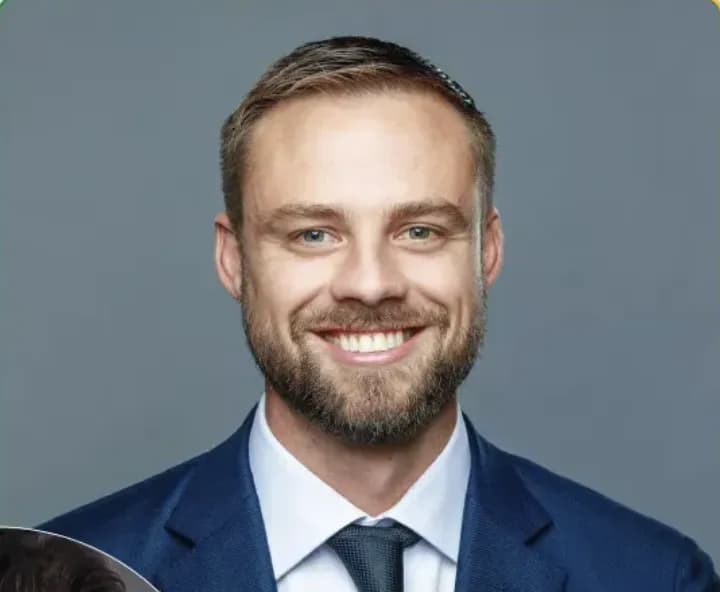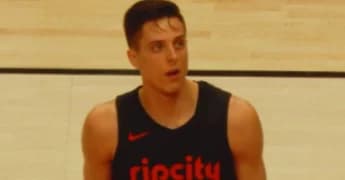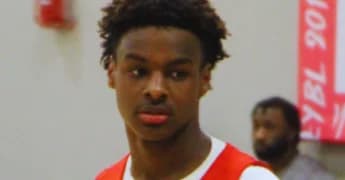
Jazz’s Gamble with Lauri Markkanen: A Bold Play in the Shadows of Danny Ainge’s Unrevealed Strategy
Let’s start with the obvious: re-signing Lauri Markkanen was a smart move for the Utah Jazz. The new contract, valued at $238 million over five years, is likely to provide solid value relative to Markkanen’s performance. By using around $24.1 million in cap space to raise his 2024-25 salary to its maximum of about $42.2 million, the Jazz can structure the deal in a way that allows for financial flexibility in the future, which could prove crucial.
Even at the maximum salary, Lauri Markkanen is a justifiable investment. At 27, he’s an elite shooter from nearly anywhere on the court and, crucially, he actually wants to be in Utah—a significant factor for a market that often struggles to attract young, high-caliber talent. Teams generally want young All-Stars who are committed to playing for them, and in that regard, keeping Markkanen on the roster is a win for the Jazz.
However, it’s the bigger picture that invites skepticism. Markkanen’s last two seasons in Utah have followed a similar pattern: the Jazz exceed expectations early in the season, largely due to Markkanen’s contributions and Will Hardy’s coaching. Then, come February, Danny Ainge initiates a sell-off, trading away veteran players. As a result, Markkanen’s minutes decrease, and the Jazz end up with a late lottery pick. This cycle seems to be leading them to another middling draft position in the loaded 2025 NBA Draft, somewhere between 7th and 12th.
This backdrop is what fueled trade rumors surrounding Markkanen. He’s an All-Star, but not quite an All-NBA player. He’s likely not a top-20 player in the league, though he is certainly within the top 35. Players in that tier can greatly enhance a team’s performance, especially when paired with a true top-20 star. The Jazz appeared to understand this, as evidenced by their quiet pursuits of players like Mikal Bridges and Jrue Holiday—both excellent supporting stars, but not the centerpiece of a championship contender.
Acquiring a true superstar in Utah is challenging. Free agency signings of that caliber seem almost impossible, and trading for one is tougher compared to the NBA’s more glamorous markets. The most viable path for the Jazz to land a star is through the draft, but Lauri Markkanen complicates that goal. With him on the roster, they’re unlikely to lose enough games to secure a top draft pick, yet not good enough to win at a high level without additional star power. They’re stuck in a kind of lottery limbo. The cleanest way to maximize their draft odds was to trade Markkanen, which is why the idea was entertained.
It’s hard to say whether they should have followed through on a trade without knowing the exact offers on the table. However, it’s fair to question if a player like Brandin Podziemski should have been a deal-breaker if the Warriors were offering control of their first-round picks. Imagine a scenario where the Jazz are among the NBA’s worst teams in the lead-up to strong 2025 and 2026 draft classes, armed with nearly unlimited draft capital from the Cavaliers, Timberwolves, and Warriors. That could have set them up as one of the most asset-rich teams in the league. This was a feasible route the Jazz could have taken, one that wouldn’t have required another mid-season course correction. It would have clarified their long-term plan.
But just because we don’t know the Jazz’s plan right now doesn’t mean they don’t have one. Danny Ainge’s track record lends him credibility that other front offices lack. He’s earned the right to operate with more secrecy than teams like the Bulls or Lakers, and retaining Markkanen fits his history of opportunistic decision-making.
Ainge’s approach has never been about sticking rigidly to a set philosophy. In 2007, the Celtics tanked for a shot at Greg Oden or Kevin Durant, and when that failed, Ainge pivoted to acquiring Ray Allen and eventually Kevin Garnett, leading to a championship in 2008. His roster-building strategy has always been about making the best move available in the moment, rather than adhering to a long-term blueprint. The trade for Isaiah Thomas during a rebuild was one such example. Many of Ainge’s biggest moves—both those he made and those that almost happened—have followed this pattern.
This brings us back to the present. Re-signing Markkanen was a good move, but likely not the best available. If Ainge could have traded Markkanen for what he perceived as a great return, he probably would have. Similarly, if he could have packaged his surplus of draft picks for a suitable co-star for Markkanen, he likely would have done that too. Instead, he chose to delay any major decisions, which isn’t necessarily a bad choice.
Due to league rules, the Jazz can’t trade Lauri Markkanen for a year after signing his extension, but that doesn’t mean they can’t explore his trade value again next summer if better options arise. His value is unlikely to diminish significantly, though it’s easier to trade an $18 million salary than one closer to the max. Perhaps something unexpected happens in the meantime—the Jazz could get lucky in the draft lottery, or one of their young players could develop into a star. Maybe they trade their other veterans and position Markkanen to lead a young, developing roster, which could eventually lead them to the bottom of the standings without having to trade him.
Of course, all of these scenarios are speculative. Every team-building strategy is filled with uncertainties unless you’re assembling a superteam like the Heat did with LeBron James and Chris Bosh. The tanking route has its own set of risks, but it also offers more control. While you can’t force another team to trade you a star, and you can’t guarantee a mid-first-round pick will develop into one, you can at least control your draft position to some extent. That certainty has value, but it doesn’t make it the universally correct or incorrect approach.
Based on what we know now, the Jazz are likely headed for another season with a mid-lottery pick. While that outcome isn’t particularly exciting, it doesn’t doom the team’s future either. It’s a bet that Ainge can navigate this tricky middle ground and eventually build something better than a full-scale rebuild would have. Given his history, it’s not an unreasonable gamble, especially since it’s a decision the Jazz can reassess by reentering the trade market later. There’s plenty of reason for long-term optimism in Utah, even if we don’t know all the details yet.
Let’s start with the obvious: re-signing Lauri Markkanen was a smart move for the Utah Jazz. The new contract, valued at $238 million over five years, is likely to provide solid value relative to Markkanen’s performance. By using around $24.1 million in cap space to raise his 2024-25 salary to its maximum of about $42.2 million, the Jazz can structure the deal in a way that allows for financial flexibility in the future, which could prove crucial.
Even at the maximum salary, Lauri Markkanen is a justifiable investment. At 27, he’s an elite shooter from nearly anywhere on the court and, crucially, he actually wants to be in Utah—a significant factor for a market that often struggles to attract young, high-caliber talent. Teams generally want young All-Stars who are committed to playing for them, and in that regard, keeping Markkanen on the roster is a win for the Jazz.
However, it’s the bigger picture that invites skepticism. Markkanen’s last two seasons in Utah have followed a similar pattern: the Jazz exceed expectations early in the season, largely due to Markkanen’s contributions and Will Hardy’s coaching. Then, come February, Danny Ainge initiates a sell-off, trading away veteran players. As a result, Markkanen’s minutes decrease, and the Jazz end up with a late lottery pick. This cycle seems to be leading them to another middling draft position in the loaded 2025 NBA Draft, somewhere between 7th and 12th.
This backdrop is what fueled trade rumors surrounding Markkanen. He’s an All-Star, but not quite an All-NBA player. He’s likely not a top-20 player in the league, though he is certainly within the top 35. Players in that tier can greatly enhance a team’s performance, especially when paired with a true top-20 star. The Jazz appeared to understand this, as evidenced by their quiet pursuits of players like Mikal Bridges and Jrue Holiday—both excellent supporting stars, but not the centerpiece of a championship contender.
Acquiring a true superstar in Utah is challenging. Free agency signings of that caliber seem almost impossible, and trading for one is tougher compared to the NBA’s more glamorous markets. The most viable path for the Jazz to land a star is through the draft, but Lauri Markkanen complicates that goal. With him on the roster, they’re unlikely to lose enough games to secure a top draft pick, yet not good enough to win at a high level without additional star power. They’re stuck in a kind of lottery limbo. The cleanest way to maximize their draft odds was to trade Markkanen, which is why the idea was entertained.
It’s hard to say whether they should have followed through on a trade without knowing the exact offers on the table. However, it’s fair to question if a player like Brandin Podziemski should have been a deal-breaker if the Warriors were offering control of their first-round picks. Imagine a scenario where the Jazz are among the NBA’s worst teams in the lead-up to strong 2025 and 2026 draft classes, armed with nearly unlimited draft capital from the Cavaliers, Timberwolves, and Warriors. That could have set them up as one of the most asset-rich teams in the league. This was a feasible route the Jazz could have taken, one that wouldn’t have required another mid-season course correction. It would have clarified their long-term plan.
But just because we don’t know the Jazz’s plan right now doesn’t mean they don’t have one. Danny Ainge’s track record lends him credibility that other front offices lack. He’s earned the right to operate with more secrecy than teams like the Bulls or Lakers, and retaining Markkanen fits his history of opportunistic decision-making.
Ainge’s approach has never been about sticking rigidly to a set philosophy. In 2007, the Celtics tanked for a shot at Greg Oden or Kevin Durant, and when that failed, Ainge pivoted to acquiring Ray Allen and eventually Kevin Garnett, leading to a championship in 2008. His roster-building strategy has always been about making the best move available in the moment, rather than adhering to a long-term blueprint. The trade for Isaiah Thomas during a rebuild was one such example. Many of Ainge’s biggest moves—both those he made and those that almost happened—have followed this pattern.
This brings us back to the present. Re-signing Markkanen was a good move, but likely not the best available. If Ainge could have traded Markkanen for what he perceived as a great return, he probably would have. Similarly, if he could have packaged his surplus of draft picks for a suitable co-star for Markkanen, he likely would have done that too. Instead, he chose to delay any major decisions, which isn’t necessarily a bad choice.
Due to league rules, the Jazz can’t trade Lauri Markkanen for a year after signing his extension, but that doesn’t mean they can’t explore his trade value again next summer if better options arise. His value is unlikely to diminish significantly, though it’s easier to trade an $18 million salary than one closer to the max. Perhaps something unexpected happens in the meantime—the Jazz could get lucky in the draft lottery, or one of their young players could develop into a star. Maybe they trade their other veterans and position Markkanen to lead a young, developing roster, which could eventually lead them to the bottom of the standings without having to trade him.
Of course, all of these scenarios are speculative. Every team-building strategy is filled with uncertainties unless you’re assembling a superteam like the Heat did with LeBron James and Chris Bosh. The tanking route has its own set of risks, but it also offers more control. While you can’t force another team to trade you a star, and you can’t guarantee a mid-first-round pick will develop into one, you can at least control your draft position to some extent. That certainty has value, but it doesn’t make it the universally correct or incorrect approach.
Based on what we know now, the Jazz are likely headed for another season with a mid-lottery pick. While that outcome isn’t particularly exciting, it doesn’t doom the team’s future either. It’s a bet that Ainge can navigate this tricky middle ground and eventually build something better than a full-scale rebuild would have. Given his history, it’s not an unreasonable gamble, especially since it’s a decision the Jazz can reassess by reentering the trade market later. There’s plenty of reason for long-term optimism in Utah, even if we don’t know all the details yet.






